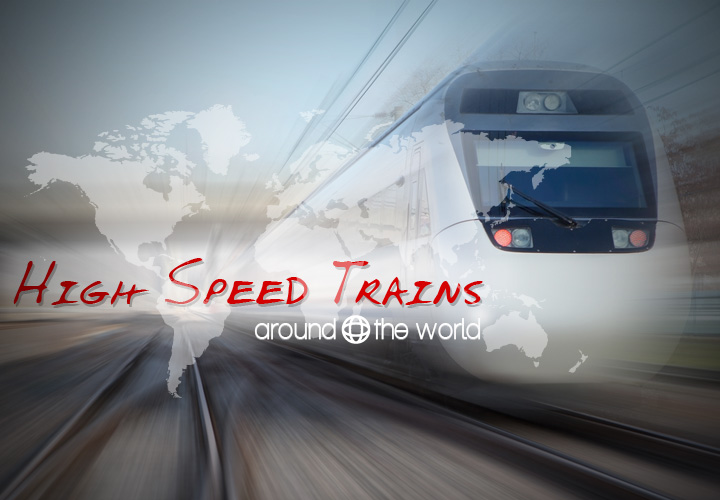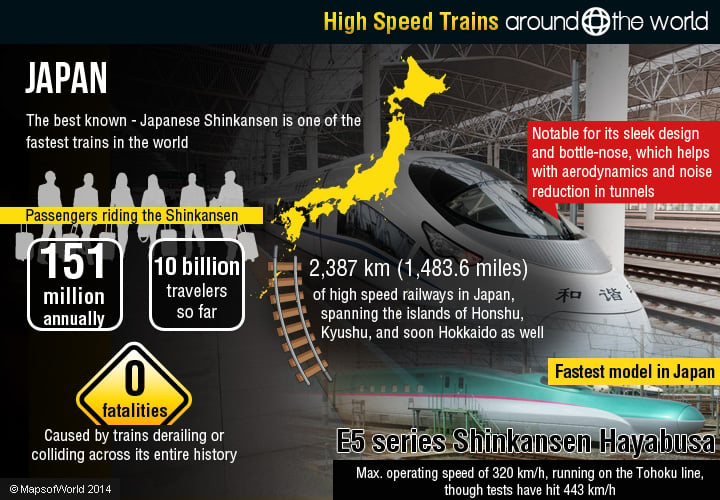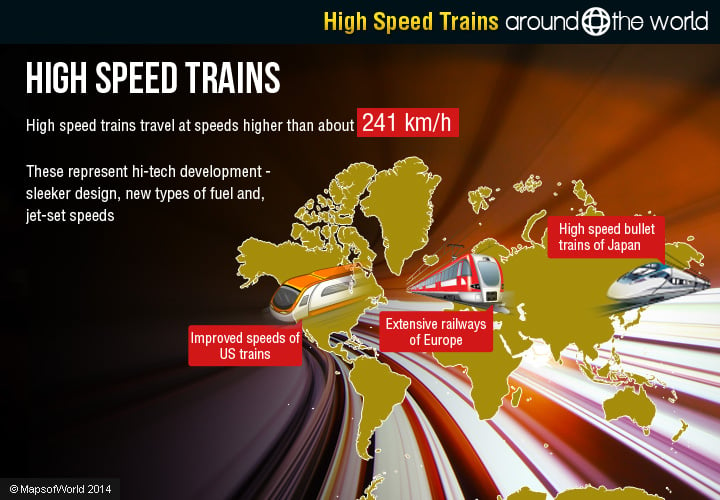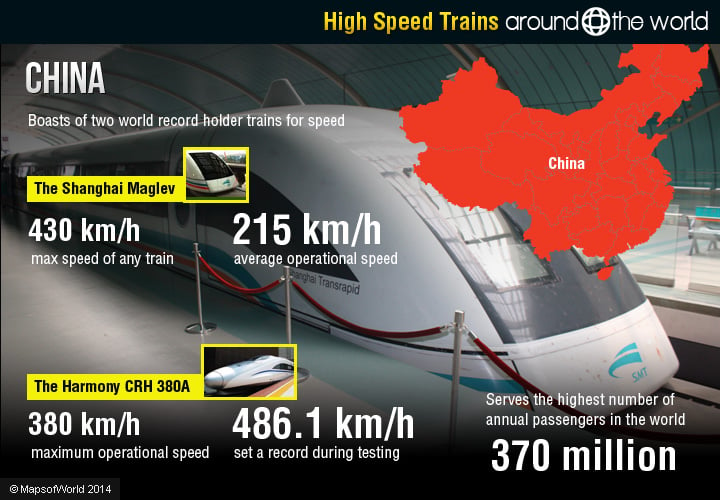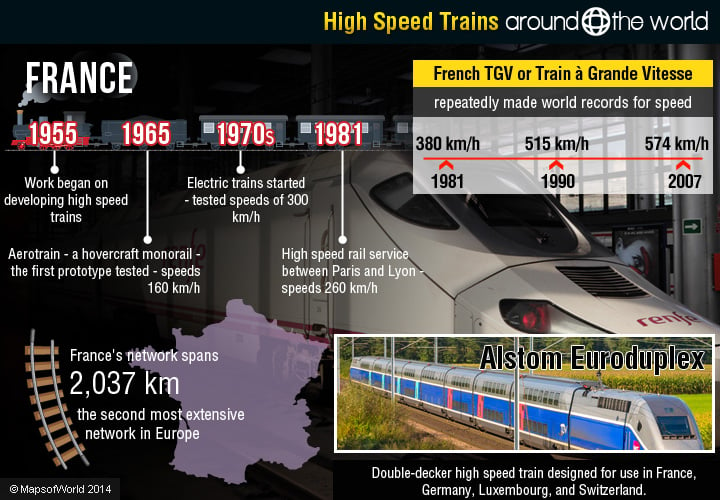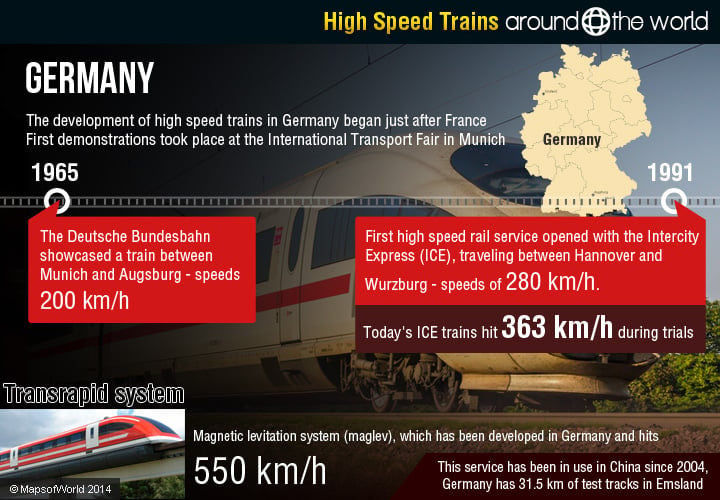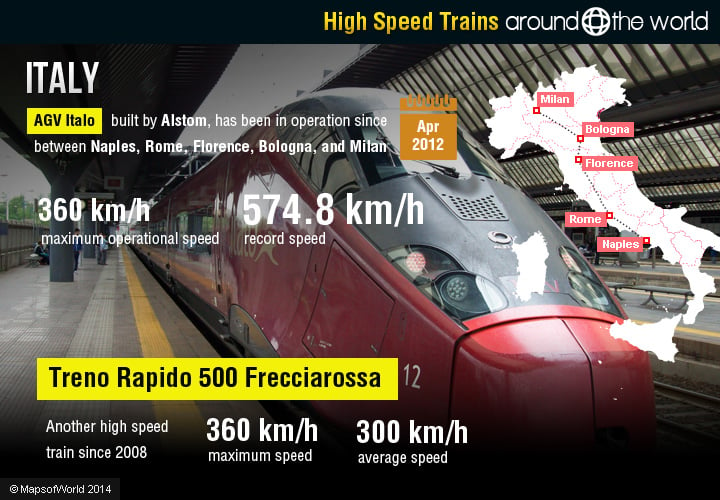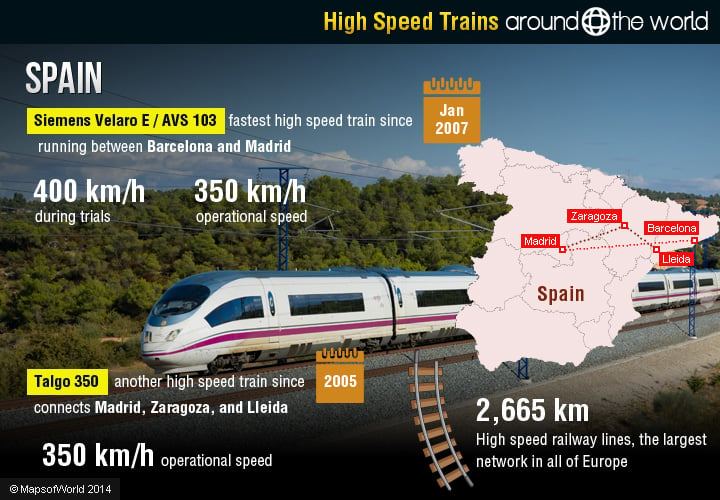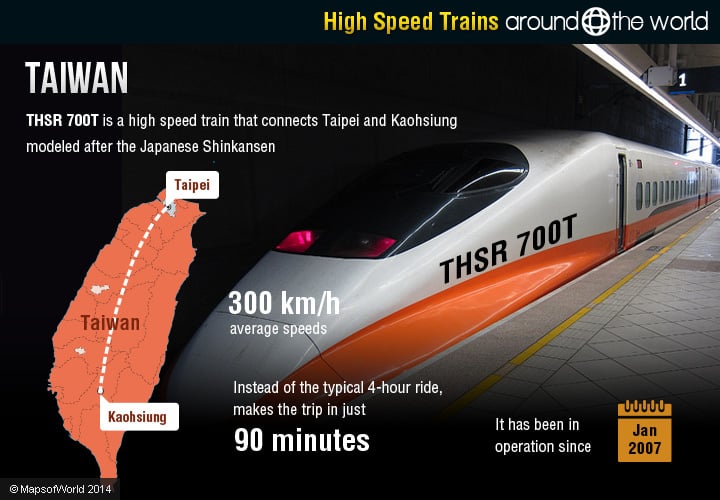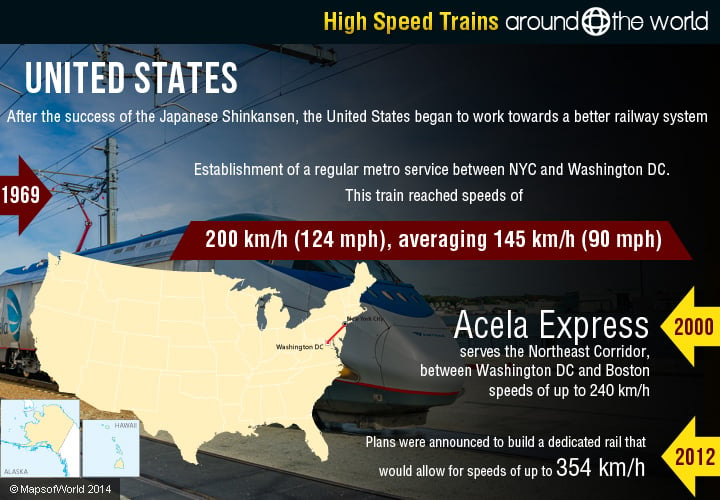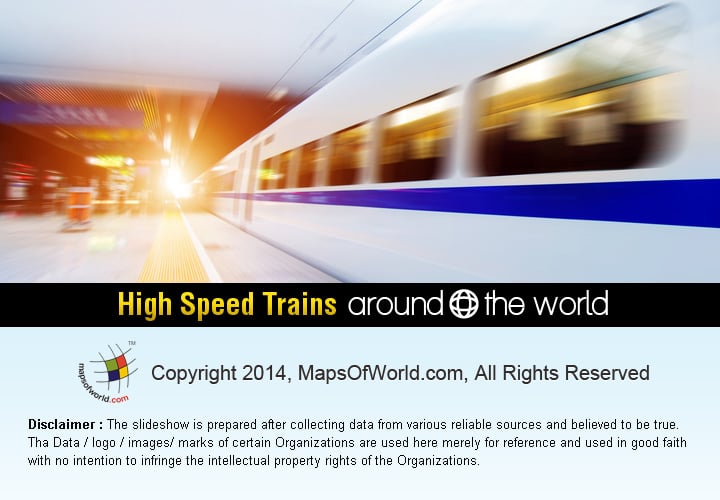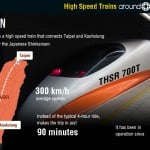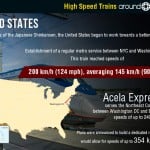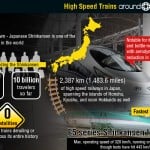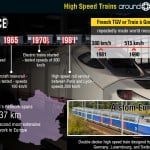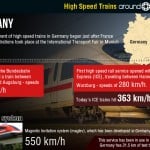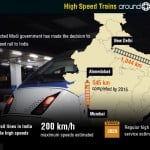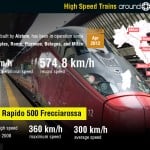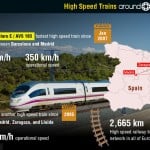High Speed Trains ATW
As globalization continues to progress, and we become better connected to places all across the Earth, our world begins to feel smaller and smaller. While the internet has in recent years been one of the biggest factor in the increase in connectivity, one of the earliest ways the world became more accessible was the railroad. Train development is constantly progressing, with sleeker designs, new types of fuel, and added comforts, but the biggest improvement of all is that of speed. High speed rail includes trains that travel at speeds higher than about 241 km/h, which can be found in several places around the world. A wide range of development and technology can be found in all over, from the high speed bullet trains of Japan to the extensive railways of Europe, the improved speeds of US trains such as the California bullet train, and the development of new high speed trains in other markets.
Japan
Perhaps the best known of all high speed trains, the Japanese Shinkansen bullet train is one of the fastest trains in the world. The first high speed train outside of Europe, the Shinkansen is notable for its sleek design and bottle-nose, which helps with aerodynamics and noise reduction in tunnels. The speed, efficiency, and noted punctuality of the Shinkansen has made the trains a model after which the rest of the world strives to follow. About 151 million annual passengers ride the Shinkansen, with the entire network having carried about 10 billion travelers, the most of any high speed train system in the world. It also has an impressive safety record, with 0 fatalities caused by trains derailing or colliding across its entire history.
There are 2,387 km (1,483.6 miles) of high speed railways in Japan, spanning the islands of Honshu, Kyushu, and soon Hokkaido as well. The first Shinkansen were put into use in 1964 for the Tokyo Olympics, reaching 210 km/h.
The fastest model in Japan is the E5 series Shinkansen Hayabusa, which has a maximum operating speed of 320 km/h, running on the Tohoku line, though tests have hit 443 km/h. The Shinkansen Hayabusa features a 15 meter long nose. This train has been in operation with the East Japan Railway Company since 2011, and was constructed by the Kawasaki Heavy Industry and Hitachi. Trains reaching 360 km/h will be in use by 2020.
France
Work on developing high speed trains in France began as far back as 1955, working with various methods, including gas turbines. The first prototype began testing in 1965, called the Aerotrain, which was a hovercraft monorail that could reach 160 km/h. In the 1970s, electric trains began to take off, reaching test speeds of 300 km/h. High speed rail service in France between Paris and Lyon beginning in 1981, started at top speeds of 260 km/h. The French TGV, or Train à Grande Vitesse, has repeatedly made it to the world record books for speed, reaching 380 km/h in 1981, then 515 km/h in 1990, and 574 km/h in 2007.
The Alstom Euroduplex is a double-decker high speed train designed for use in France, Germany, Luxembourg, and Switzerland. The train can carry 1,020 passengers, about double the capacity of previous models (like the TGV Duplex). These trains have been in operation since December 2011, and reach speeds of 320 km/h. France’s network spans 2,037 km, the second most extensive network in Europe.
Germany
The development of high speed trains in Germany began just after France, though the Germans took a big longer to successfully launch their service. The first demonstrations took place at the International Transport Fair in Munich in 1965, with the Deutsche Bundesbahn showasing a train between Munich and Augsburg, which traveled at 200 km/h. Germany’s first high speed rail service opened in 1991 with the Intercity Express (ICE), traveling between Hannover and Wurzburg, and reaching speeds of 280 km/h. Today’s ICE trains hit 363 km/h during trials. Additional high speed rail lines are in planning or construction phases, but service will soon be available between Offenburg and Basel, and Nuremburg and Leipzig.
The Transrapid system is a magnetic levitation system (maglev), which has been developed in Germany and hits 550 km/h. While this service has been in use in China since 2004, Germany has 31.5 km of test tracks in Emsland.
United States
Because of the vast size of the United States, trains were a common form of transportation around the United States in the early 1900s. After the success of the Japanese Shinkansen, the United States began to work toward a better railway system. One of President Lyndon B. Johnson’s Great Society initiatives was the High Speed Ground Transportation Act of 1965. This led to the establishment of a regular metro service between NYC and Washington DC, which was inaugurated in 1969. This train reached speeds of 200 km/h (124 mph), averaging 145 km/h (90 mph).
One of the high speed trains in US since 2000, the Acela Express serves the Northeast Corridor, between Washington DC and Boston, stopping in New York, Philadlphia and Baltimore, and hitting speeds of up to 240 km/h. The trip between NYC and DC, however, takes almost 3 hours, when the metroliner of 1969 made the trip in just 2.5 hours, because today’s train must share the rails with standard train service. In 2012, plans were announced to build a dedicated rail that would allow for speeds of up to 354 km/h. In 2008, California voted to build a high speed train and rail system across the state, connecting San Francisco and Los Angeles. The project has stalled as details continue to be sorted out, but construction is slated to begin in 2014.
China
China’s high speed trains boast of the two world record holders for speed, the Shanghai Maglev and the Harmony CRH 380A, owned by Shanghai Maglev Transportation Development Company, but constructed by Siemens and ThyssenKrupp. The Shanghai Maglev has the fastest max speed of any train at 430 km/h, with an average operational speed of 215 km/h. The first commercial high-speed magnetic levitation line, the Shanghai Maglev line spans only 30.5 km, running between Longyang Road Station (Metro Line 2) and Shanghai Pudong International.
China’s high speed rail serves the highest number of annual passengers in the world, with 370 million annual riders.
The Harmony CRH 380A is the second fastest train, with a maximum operational speed of 380 km/h. The train set a record during testing, reaching 486.1 km/h. The train has been operating in China since October 2010 with daily service between Wuhan and Guangzhou. The train features a sleek design and was constructed by CSR Qingdao Sifang Locomotive and Rolling Stock.
Italy
The AGV Italo, built by Alstom, has a maximum operational speed of 360 km/h, but its record speed is 574.8 km/h, in tests in April 2007. This high speed train in Italy has been in operation since April 2012, running on the corridor between Naples and Milan, stopping in Rome, Florence, and Bologna in between. The Elettro Treno Rapido 500 Frecciarossa has been in use in Italy since 2008. This model reaches speeds of 360 km/h, but an average speed of 300 km/h as it runs between Rome and Milan. The trains were constructed by TREno Veloce Italiano and is operated by Trenitalia.
Spain
Spain’s fastest high speed train is the Siemens Velaro E / AVS 103, reached 400 km/hr during trials. The train began service in June 2007, with an operational speed of 350 km, running between Barcelona and Madrid.
Another Spanish high speed train is the Talgo 350, with a maximum operational speed of 350 km/hr. The train runs between the Spanish cities of Madrid, Zaragoza, and Lleida, and has been in operation since 2005. At least 46 of the Talgo 350 trains operate in Spain today.
Spain has 2,665 km of high speed railway lines, the largest network in all of Europe.
Taiwan
Taiwan’s THSR 700T is a high speed train that connects Taipei and Kaohsiung, traveling at an average time of 300 km/h and making the trip in just 90 minutes, instead of the typical 4 hour ride. The THSR 700T is modeled after the Japanese Shinkansen and manufactured by Kawasaki, Hitachi, and Nippon Sharyo, using Japanese technology. It has been in operation since January 2007, and there are 345 kilometers of track.
India
As one of his first orders of business, India’s new leader, Prime Minister Narendra Modi, has made the decision to begin work on establishing high speed rail in India. The project works in conjunction with the High Speed Rail Corporation, and will showcase train service between Mumbai and Ahmedabad, a 545 km corridor. Studies on this route should be completed by 2015. Another route between New Delhi and Patna, which would run 1,044 km, may be another possibility. There are currently no rail lines in India that would be able to handle the high speed trains, so maximum speeds are currently estimated at 200 km/h, with an average of about 130 km/h. Future plans are aiming to reach 300-350 km/h. Regular high speed rail service in India is estimated to begin at the earliest in 2020.

